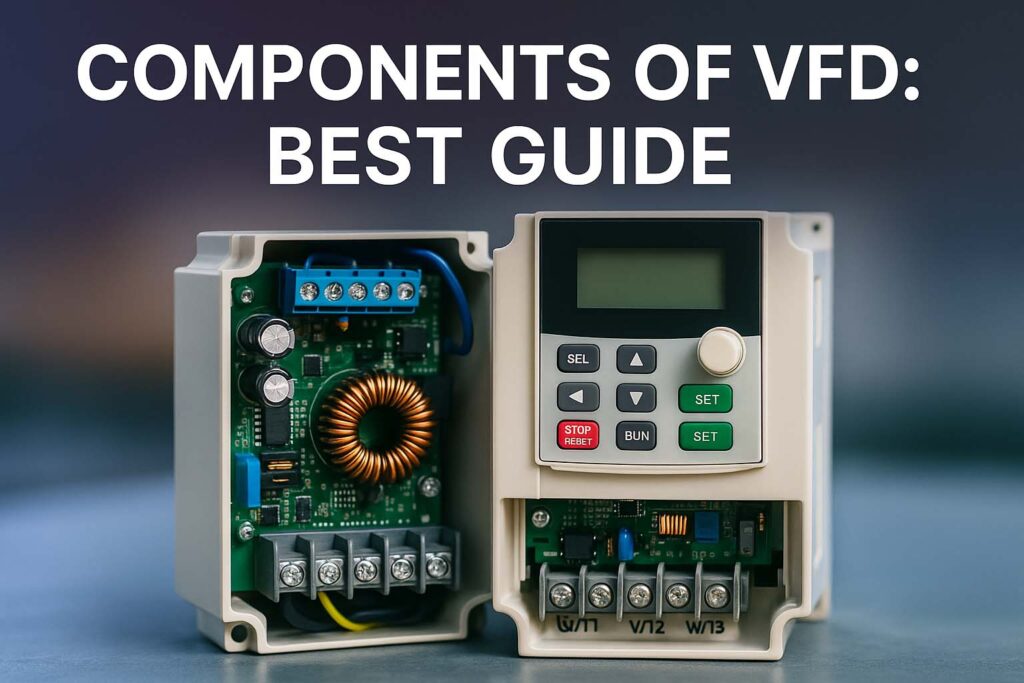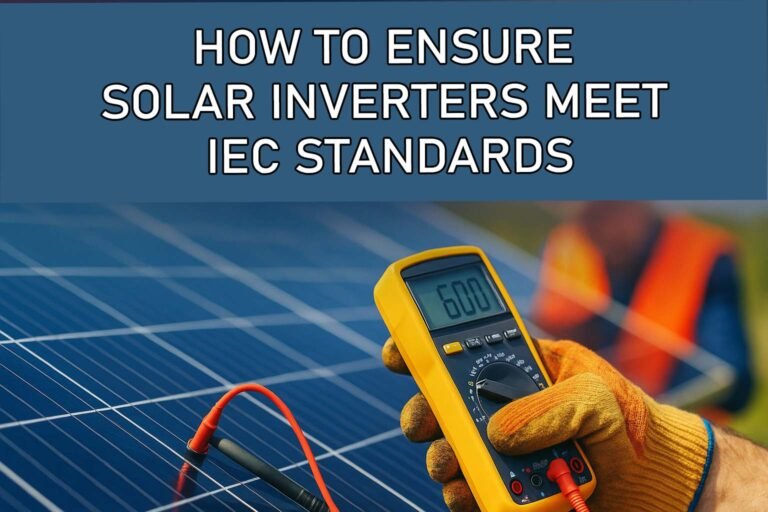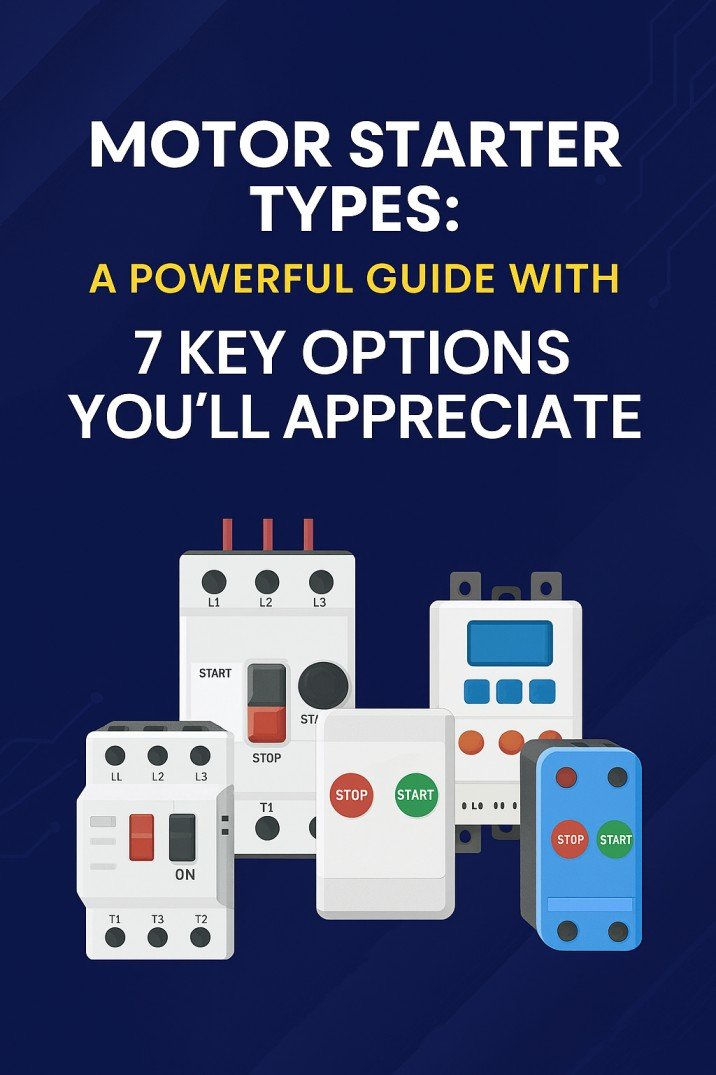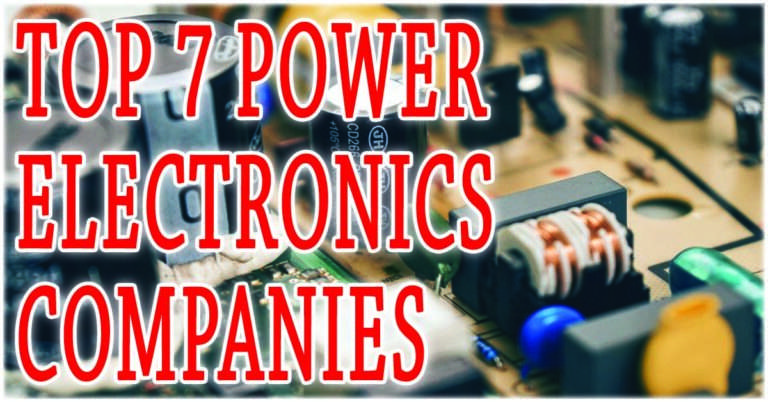Components of VFD: Best Guide
A Variable Frequency Drive (VFD) is an essential device used to control the speed and torque of electric motors. It works by adjusting the frequency and voltage supplied to the motor. The key function of a VFD is to provide energy-efficient motor control and to improve system performance. In this guide, we will explore the components of VFD in detail. Whether you’re dealing with a single-phase drive or a 3 phase frequency drive, understanding these components is critical.

VFDs are used across industries in HVAC systems, conveyor belts, water pumps, and more. They provide smoother motor starting, precise speed control, and better protection. Before diving into the components, let’s briefly understand what a VFD is.
What is a Variable Frequency Drive?
A Variable Frequency Drive is a type of motor controller. It takes the fixed frequency AC input and converts it into a variable frequency output. This variable output controls the speed of an AC motor. VFDs are sometimes referred to as variable speed drives, frequency converters, or simply drives.
Most industrial applications use either a single-phase drive or a 3 phase frequency drive, depending on the system’s power needs. The working principle is based on power electronics and control algorithms.
Now, let’s understand the main components of VFD and how they contribute to motor control.
Key Components of VFD
A VFD contains several internal blocks that work in unison to control motor speed and torque. Each component performs a specific function, and failure of any one part can disrupt the whole system. Here are the primary components of VFD:
Rectifier Circuit
The rectifier is the first stage in a VFD. It converts the incoming AC power into DC power. This stage uses either diodes or thyristors. In most VFDs, a six-pulse diode rectifier is common due to its simplicity and cost-effectiveness.
The rectifier handles line voltages and provides a constant DC output. For single-phase drives, the rectifier uses fewer components, while in a 3 phase frequency drive, the rectifier setup is more complex.
DC Bus
The DC bus, also known as the DC link, stores the converted DC voltage. It acts as a filter and energy reservoir. The main elements of the DC bus include capacitors, inductors, and resistors.
Its role is to smooth out ripples and maintain a stable voltage level. This is crucial for accurate frequency control. The DC bus also isolates the rectifier and inverter stages.
Inverter Circuit
The inverter is the most dynamic section in a VFD. It converts DC voltage back into a controlled AC output. The inverter uses power electronic switches like IGBTs (Insulated Gate Bipolar Transistors) or MOSFETs.
These switches are turned on and off rapidly using Pulse Width Modulation (PWM). This controls the voltage and frequency sent to the motor. The inverter determines the output power quality, efficiency, and motor performance.
Control Circuit
The control circuit is the brain of the VFD. It sends signals to the inverter switches to generate the desired output frequency. It receives feedback from the motor, processes user inputs, and adjusts output accordingly.
This circuit includes microcontrollers, digital signal processors (DSPs), and analog input/output components. Some VFDs can even interface with an Arduino to provide custom control features or remote monitoring.
Protective Circuit
The protection system in a VFD is vital for the safety of both the drive and the motor. It monitors various parameters like voltage, current, temperature, and ground faults.
If abnormal conditions occur, the protective circuit shuts down the VFD or limits its output. It prevents damage from overloads, short circuits, and overheating. Good protection extends the lifespan of the frequency drive.
User Interface and Display
The user interface allows operators to interact with the VFD. It includes buttons, displays, and communication ports. Operators can start/stop the motor, adjust parameters, and monitor system status.
Modern drives support LCDs, keypads, or touchscreen panels. Some drives can be controlled remotely or integrated with industrial networks.
Components of VFD and Their Functions Table
Here is a summary of the components of VFD in a simple table:
| Component | Function |
|---|---|
| Rectifier | Converts AC input to DC |
| DC Bus | Filters and stores DC power |
| Inverter | Converts DC to variable frequency AC |
| Control Circuit | Manages switching of power devices |
| Protective Circuit | Ensures system safety under fault conditions |
| User Interface | Allows configuration and monitoring of the VFD |
Drive Heat Dissipation and Cooling
A common challenge in VFD operation is managing heat. Heat is generated due to switching losses and current flow in semiconductors. Drive heat dissipation is handled using:
- Heat sinks
- Cooling fans
- Liquid cooling systems
Proper heat management ensures efficiency and protects sensitive components. Overheating can lead to failure of the IGBTs or control circuits. Always maintain good airflow around the VFD enclosure.
Frequency Drive Harmonic Filter
One downside of VFDs is the harmonic distortion they introduce into the power system. Harmonics can cause voltage imbalance, overheating in transformers, and interference with other equipment.
A frequency drive harmonic filter is used to mitigate these effects. Filters can be passive (inductors and capacitors) or active (electronics that cancel harmonics). Using a harmonic filter ensures compliance with IEEE-519 standards and enhances system reliability.
Choosing Between Single Phase Drive and 3 Phase Frequency Drive
The power supply type determines which drive to use. For residential or small commercial loads, a single-phase drive is sufficient. These drives usually work up to 3 HP.
Industrial motors often require a 3 phase frequency drive. These are designed for heavy-duty operations and deliver better power quality and efficiency. Always check motor ratings and power supply compatibility before choosing the drive.
Drive with Arduino – Custom Control Possibilities
VFDs can be controlled externally using an Arduino or similar microcontroller. This opens up possibilities for automation, wireless control, and remote monitoring.
Using Arduino, you can:
- Send analog or digital signals to the VFD
- Monitor motor speed or temperature
- Implement custom logic based on sensors
This is especially useful in DIY projects, automated irrigation systems, or smart building controls.
Final Thoughts on Components of VFD
Understanding the components of VFD is essential for selecting, operating, and maintaining motor control systems. Each component plays a unique role in converting power and managing motor performance.
Whether you are working with a basic single-phase drive, a powerful 3 phase frequency drive, or integrating a drive with Arduino for automation, the internal structure remains largely the same. The difference lies in component rating and control complexity.
Follow Us on Social:
Subscribe our Newsletter on Electrical Insights for latest updates from Electrical Engineering Hub
#VFDComponents, #VariableFrequencyDrive, #VFDWorking, #VFDParts, #IndustrialAutomation, #MotorControl, #ElectricalEngineering, #VFDCircuit, #PowerElectronics, #InverterTechnology, #DriveSystem, #VFDControlPanel, #ElectricDrives, #EnergyEfficiency, #AutomationTechnology






